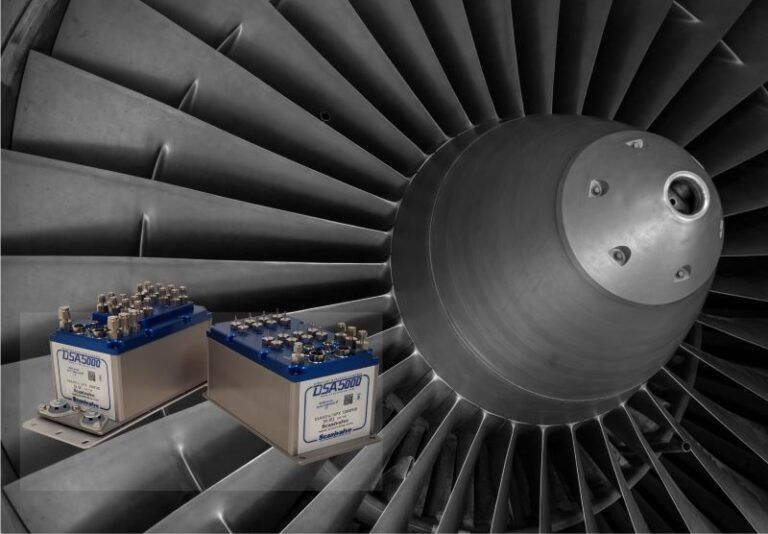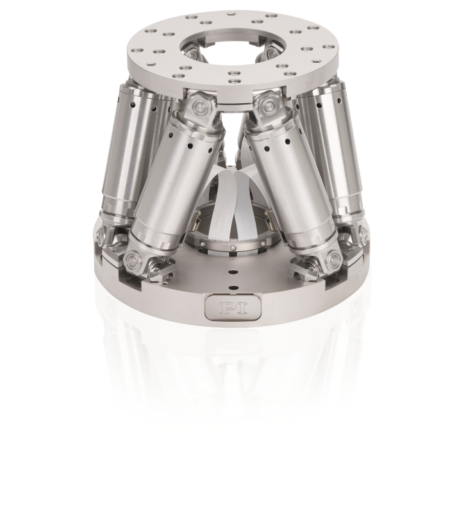Gas turbine test environments are notoriously challenging locations for measurement instruments. The intense noise and vibrations can affect the accuracy of valuable data required by engineers to optimise turbine performance, improve efficiency, and ensure operational safety.
It is with this tough environment in mind that the world leaders of high-density pressure measurement instrument manufacturing, Scanivalve, developed the DSA5000 pressure scanner.
Pressure scanners measure and monitor the pressures at various points within the turbine system. The scanners collect data on the dynamic pressure changes occurring in different stages of the turbine, such as in the compressor, combustion chamber, and exhaust sections.
Pressure scanners also monitor pressures in the different stages of the compressor, tracking how air is compressed as it moves through the system. This data helps in identifying any anomalies such as surges, stalls, or inefficiencies in the compression process.
The pressure in the combustion chamber is critical to ensure that fuel and air are combusting at optimal levels. Using pressure scanners, ensure proper mixing, combustion efficiency, and avoid pressure instabilities that could lead to operational issues like blowouts.
By taking high-speed real-time pressure measurements in the turbine and exhaust stages, pressure scanners provide feedback on how the energy from the combustion process is being converted into mechanical energy. Proper pressure balance ensures that the turbine operates efficiently without unnecessary strain on components.
Understanding rapid pressure fluctuations is critical high-performance gas turbines. Pressure scanners help measure dynamic pressures due to rotor vibrations or flow instabilities, which are key to detecting early signs of wear, failure, or inefficiencies.
Finding a pressure scanner suitable for this kind of environment can be challenging. The DSA5000 pressure scanner is unique, as it utilises an individual 24-bit A/D converter and RTD for each sensor allowing fully and truly synchronous data collection. Data can be delivered at rates of up to 5,000Hz per channel in a wide of engineering units.
Through ring-architecture capability, multiple DSA5000s can be connected together through miniature Ethernet connectors. This delivers the industry’s only integrated, multi-drop architecture, industrial network configuration for pressure scanning instrumentation. This creates an isolated, mini-network where the “master” unit serves as a single point of communications for all scanners in the mini-network. Scanners are automatically identified, easily configured, and accurately synchronized. Data from all scanners are merged together to provide a single output data file with pressure and temperature values from all of the connected Scanivalve 5000 series scanners.
Whilst smart, fast and highly accurate, the DSA5000 is designed withstand extreme environments too. Its IP67 rated aluminium case is rugged but lightweight, with an option to install a self-controlled internal heater which allows operation in ambient temperatures down to -50°C. The DSA5000 can also be fitted with an optional shock-mount kit, which has been tested to MIL-STG 810G Cat. 24, 514.6.
Operating a wide range of pressure ranges from 4”H2O (0.18psi) to 1,000psi (at launch) in several pneumatic configurations means a DSA5000 can be configured for low pressure aerodynamic tests, high pressure compressor tests, and everything in-between.
Paul Crowhurst, managing director at Evolution Measurement said, “This is a truly exciting product. Never before have we seen this level of capability in a pressure instrument. This is going to revolutionize aerodynamic development as our world embarks on more advanced airframe and gas turbine engine development.”
More details on the Scanivalve DSA5000 are available at https://www.evolutionmeasurement.com/product/dsa5000-ethernet-pressure-scanner/.





